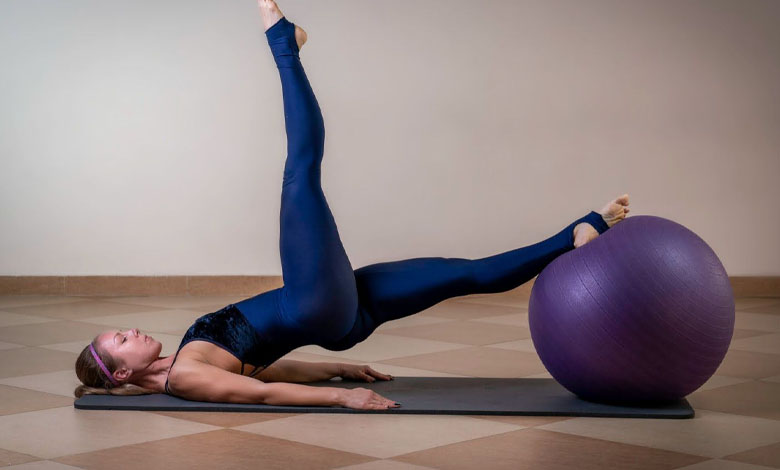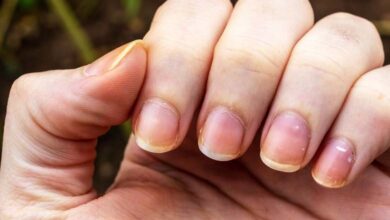The Top 7 Health Benefits of Practicing Pilates

You may know Pilates as an exercise program that builds long, lean muscles and a particularly strong core. This program uses 50 different exercises to boost muscle strength and endurance, as well as improve balance, flexibility and posture, according to previous research. Pilates has a positive effect on the health of most voluntary muscles (skeletal muscles that you control) in the body, primarily the larger muscles. It helps stretch and strengthen the muscles of the forearm, arm, neck and back, hips, thighs and legs.
But it can also provide other, lesser-known benefits that you might not notice when looking in the mirror. Here are seven health benefits associated with Pilates.
1. Improved balance, strength and flexibility in the elderly
With an emphasis on working the core, Pilates exercises can help improve body balance. But that’s not all: A meta-analysis of randomized controlled trials showed that Pilates improved dynamic balance, lower extremity strength, hip and lower back flexibility, and endurance heart disease in adults over 60 years of age. Pilates training doesn’t have to be fancy either. Another systematic review and meta-analysis noted that Pilates is safe and affordable since the only equipment needed is a floor mat.
2. Reduced risk of falling
Improving physical function may also help protect against falls, which are a common cause of emergency room visits among older adults each year. Pilates works the muscles of the arms, legs and core, which includes the neck and lower and upper back. It gives agility and strength to our body, which helps us in our daily activities as well as in our recreational activities. With better balance, strength, flexibility and functionality, older people can significantly reduce their risk of falling, according to a systematic review and meta-analysis. Ultimately, it can help seniors live independently longer. And while other exercises may have the same effects, some research suggests that Pilates has an edge in this regard. A randomized controlled trial found that while any physical activity can improve balance and strength, which can reduce the risk of falling, Pilates has a greater effect than a general fitness program.
3. Reduced risk of injury
Pilates helps strengthen core muscles and stabilize the body, which can reduce the risk of injury. This includes potentially reducing the risk of overuse injuries in athletes and active adults and children. A study published in August 2017 in the International Journal of Sports Medicine found that when recreational runners completed a six-week Pilates program, they saw an improvement in functional movement (measured by deep squat, hurdle step and a lunge), which helps reduce the risk of running-related injuries, the researchers said. In another small study, published in February 2020 in the Journal of Exercise Rehabilitation, eight teenagers completed an eight-week Pilates program. Participants increased muscle mass and core and shoulder strength. The researchers concluded that it will not only improve performance, but could likely help prevent future injuries.
4. Less lower back pain
One of the most important benefits for preventing back pain is taking care of the trunk. This is where Pilates comes in: Building a strong and stable core is at the heart of Pilates practice. A systematic review found that practicing Pilates for 6-12 weeks provided short-term pain reduction in patients with chronic lower back pain. Researchers recommended two or three one-hour Pilates sessions per week for the greatest benefit.
5. Fight stress and improve mood
For most people, low-intensity exercise, like Pilates, helps reduce stress. And the research backs it up: According to a study of 63 obese or overweight participants, one-hour Pilates sessions, three times a week for eight weeks, had a positive impact on anxiety, depression, and quality of life. Part of that could be because Pilates forces you to focus on your body, rather than what’s going through your mind. According to a study (PDF), Pilates is a mind-body exercise that requires focus on breath, posture and movement control.
6. A more efficient brain
Pilates has also been shown to have a positive effect on your mental acuity. A study of 110 Spanish women over the age of 60 found that a three-month Pilates program improved verbal fluency and executive functions, as shown in a test that included timed motor and visual tasks. The researchers also found physical improvements, including better lower body strength and greater functional flexibility. But it should be noted that they found no improvement in other measures of cognitive function (including language, attention and calculation, recall, orientation and registration) among participants in the study. The study researchers noted that their research focused on short-term outcomes and that future research should investigate the effect of long-term Pilates practice on the brain.
7. Better symptom management for people with Parkinson’s disease
Parkinson’s disease can lead to motor difficulties, but Pilates can remedy this. A study and meta-analysis showed that Pilates helped patients with Parkinson’s disease improve their physical fitness, balance and functional independence, with specific benefits for the lower body. The researchers concluded that Pilates can be prescribed to treat people with mild to moderate Parkinson’s disease.
How long does it take to see benefits?
The answer to this question depends on the individual, their starting point and their goals. For example, the previously mentioned systematic review on lower back pain noted positive changes after a cumulative 20 hours of Pilates. This corresponds to 10 weeks of two one-hour sessions per week. In general, you can expect to see benefits after six to eight weeks of practicing Pilates twice a week. If you want to practice Pilates more frequently than that, feel free. You only risk overdoing it if your form is compromised. According to Milton, as long as you’re using proper technique and activating the correct muscles, you shouldn’t injure yourself.












